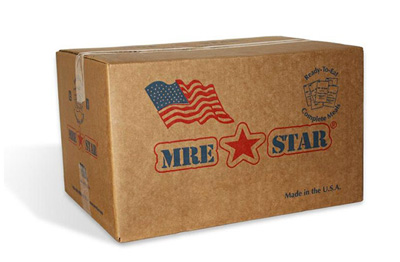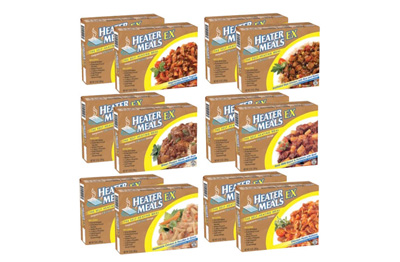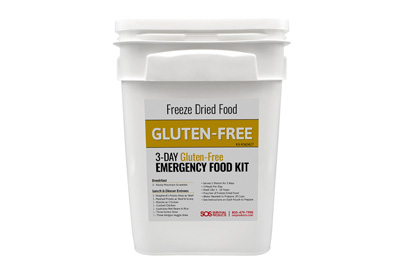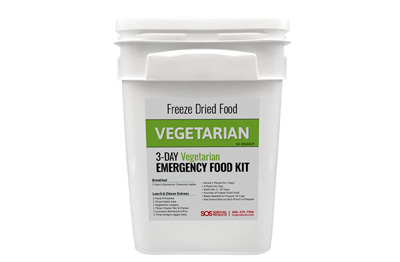How do MRE heaters work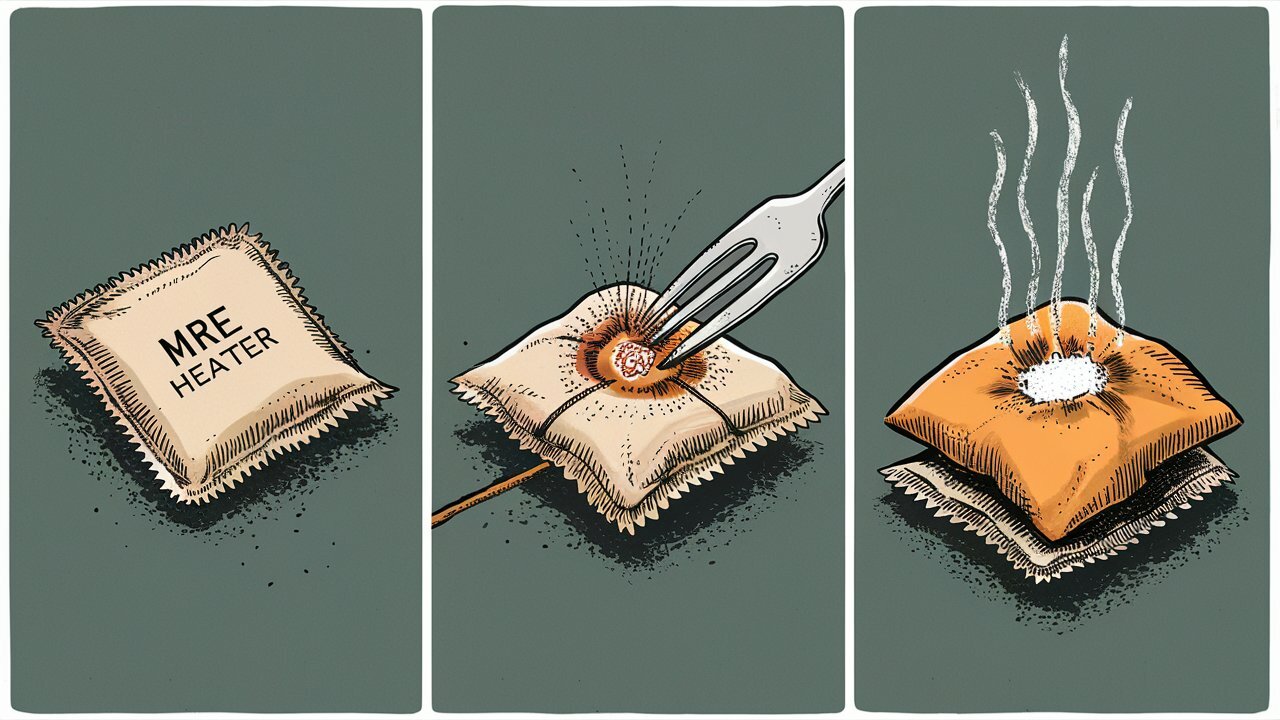 MRE heaters (Flameless Heaters), often overshadowed by traditional cooking methods, carve out a niche for themselves with their unparalleled convenience and efficiency. As a type of flameless heater, they are an innovative disposable heating pad designed for heating MRE pouches without the need for stoves, fuel, or cookware. This unique characteristic sets them apart in the diverse world of outdoor and survival gear, offering a distinct solution that positions MRE heaters as a category of their own. Key components of MRE heaters include magnesium, iron, and salt, each known for their specific roles in the heat-generation process. MRE heaters (Flameless Heaters), often overshadowed by traditional cooking methods, carve out a niche for themselves with their unparalleled convenience and efficiency. As a type of flameless heater, they are an innovative disposable heating pad designed for heating MRE pouches without the need for stoves, fuel, or cookware. This unique characteristic sets them apart in the diverse world of outdoor and survival gear, offering a distinct solution that positions MRE heaters as a category of their own. Key components of MRE heaters include magnesium, iron, and salt, each known for their specific roles in the heat-generation process.
Single-use water-activated technology also stands out, offering a safe and simple choice for heating meals. Digging a bit deeper, each element of an MRE heater contributes to its function, from the chemical reactions that generate heat to the materials that safely contain the process. The following sections will explore these components in detail, providing a richer understanding of what makes MRE heaters an indispensable tool for adventurers, military personnel, and emergency preparedness enthusiasts worldwide. What is a flameless ration heaters
 A flameless ration heater, a specific type of MRE heater, is a cornerstone in the realm of portable meal solutions. It is a compact, self-contained packet designed for the heating of meals ready to eat (MREs) without the need for an external heat source. It leverages a simple yet ingenious chemical reaction to generate heat upon the addition of water. This innovation not only breaks down the barriers of needing traditional cooking utilities but also ensures that individuals can enjoy a warm meal, regardless of their location. Its design is a testament to the blend of chemistry and convenience, catering specifically to those in environments where traditional cooking methods are not feasible. MRE heaters prove especially beneficial in a variety of situations and environments, such as during hiking trips, where carrying traditional cooking gear is impractical; in military operations, where quick, reliable access to warm meals can boost morale and energy; and in disaster relief efforts, where infrastructure damage makes conventional meal preparation impossible. These scenarios underscore the MRE heater’s importance as a versatile, essential tool for ensuring access to warm food under conditions where other methods are unavailable or inconvenient.Average calorie count: 1200-1500 caloriesMREs are designed to offer a substantial energy intake, with an average calorie count ranging from 1200 to 1500 calories. This caloric provision is in line with the goal of meeting the vigorous energy requirements and nutritional needs of service members engaged in intense physical activities or in situations where regular meals are not accessible. The 1200 to 1500 calorie range ensures that each MRE delivers enough energy to sustain an individual’s needs for a significant part of the day, making it an ideal, self-contained meal solution for a variety of demanding environments. Why MREs have high calorie contentThe high calorie content in MREs is purposefully designed to match the energy expenditure of individuals in highly active roles, such as military personnel, emergency responders, and outdoor adventurers. Developed with the expertise of the Natick Soldier Research, Development and Engineering Center, these meals are engineered to compensate for the intense physical demands and limited access to regular food sources experienced in the field. By packing a dense caloric punch, MREs ensure that one can maintain energy levels and operational readiness, even under strenuous conditions. This design philosophy underscores the critical role of MREs in survival, emergency preparedness, and field operations, where maximizing caloric intake within limited opportunities to eat is essential. The importance of shelf life in MREs ensures that their nutritional content and sensory quality remain intact, meeting the performance-oriented nutrition needs of service members over the entire shelf-life of the MRE. Designed for active service membersMREs are specifically tailored for active military personnel who require high-energy nutrition to sustain their performance in the field. The demanding nature of military operations necessitates a diet that can support prolonged physical activity and cognitive alertness. MREs fulfill this requirement by providing a balanced mix of macronutrients, ensuring soldiers have the energy needed for their duties. A senior food technologist plays a crucial role in improving the nutritional value of MREs, focusing on enhancing their performance-oriented aspects. Compensates for high-energy, high intensity combat operationsThe calorie-dense nature of MREs and other combat rations compensates for the increased energy expenditures associated with high-energy field activities, not just in military contexts but also among hikers, climbers, and emergency responders. These activities demand significant caloric intake to maintain endurance and strength over extended periods. MREs offer a practical solution, delivering the necessary calories and nutrients to support these intense physical efforts. Variations in calorie content among MREsThe calorie content in MREs can significantly vary, influenced by factors such as the type of entrée, the inclusion of snack and side items, and the specific dietary focus of the meal, such as vegetarian or meat-based options. This variation in military rations is designed to meet the increased nutritional needs of service members during demanding operations, ensuring that individuals can select MREs that best suit their energy requirements and taste preferences. For instance, breakfast MREs might contain different calorie counts compared to lunch or dinner options, reflecting the typical daily energy expenditure pattern. Such diversity in caloric content allows for more personalized nutrition management, especially in scenarios where physical demands and access to food vary greatly. Factors affecting calorie count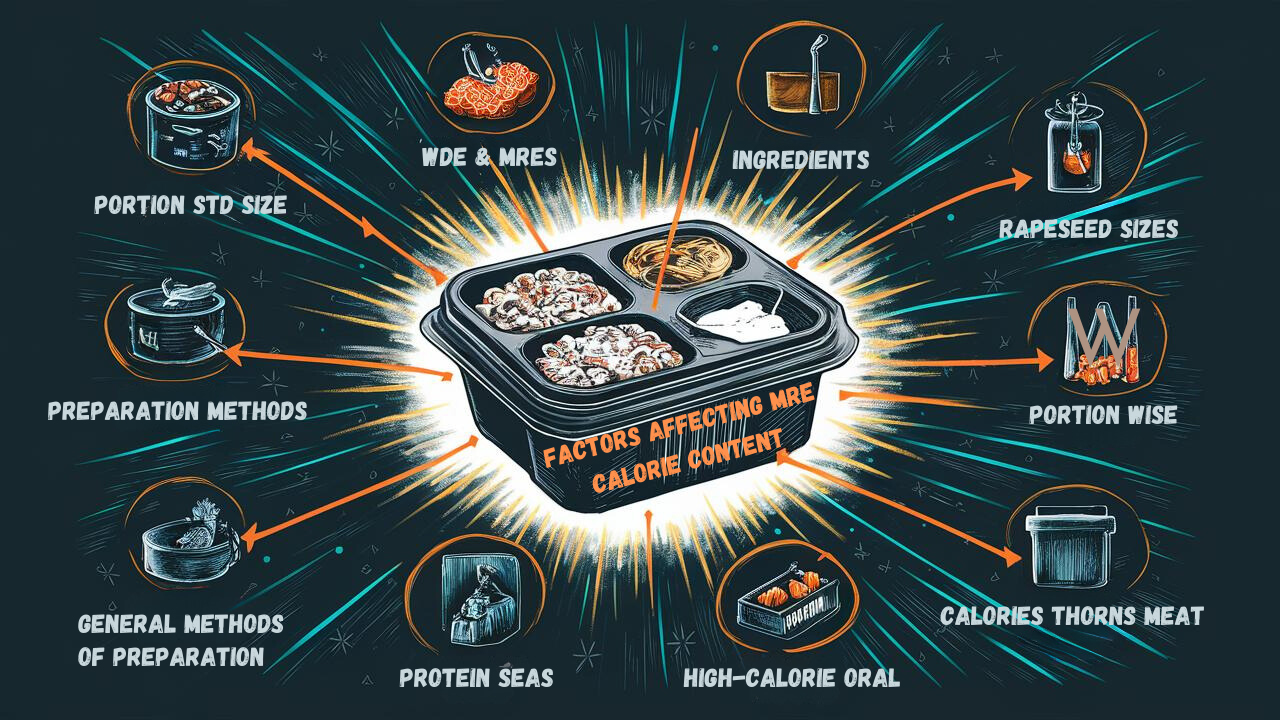 Several factors influence the calorie count in MREs, including the continuous development of new food items, the meal’s composition, the specific ingredients used, and the nutritional goals it aims to meet. These variables ensure MREs can adapt to diverse dietary requirements and energy needs. Type of entreesThe main entree in an MRE, which is a crucial component of operational rations provided to the U.S. Military Services, plays a significant role in determining its overall calorie content. Options range from high-protein meats to lighter vegetarian dishes, each contributing differently to the meal’s caloric total. Snack and side itemsSnacks and side items, such as nuts, dried fruits, or chocolate, add to the calorie count of an MRE. Their inclusion is strategic, aimed at boosting energy levels and providing variety in taste and texture. The minimum shelf life of these MREs ensures that the nutritional content and sensory quality do not degrade too quickly, meeting the performance-oriented nutrition needs of service members in the field over the entire shelf-life of the product. Examples of calorie variationsVegetarian options vs. meat options
Breakfast MREs vs. lunch/dinner MREs
Importance of calorie content in MREs for consumers
Understanding the calorie content of MREs is crucial for consumers, especially those engaging in high-energy activities or facing emergency situations. Service members play a significant role in providing feedback and satisfaction in the development of MREs, ensuring they meet the dietary needs and preferences of those in combat or field conditions. The right caloric intake ensures individuals can meet their dietary needs, maintain energy levels, and sustain physical performance over extended periods of time. For outdoor adventurers, soldiers, and emergency responders, selecting MREs with appropriate calorie content is vital for endurance and survival. It enables effective planning and rationing of meals, ensuring that energy needs are met without unnecessary bulk or weight. Moreover, for individuals with specific dietary requirements or preferences, knowledge of the calorie count aids in making informed choices that match with their health and nutritional goals, enhancing the overall utility and effectiveness of MREs in diverse scenarios. Meeting nutritional needsThe calorie content in MREs is key for individuals to meet their dietary needs, particularly when traditional food sources are not available. By providing a balance of nutrients and calories, MREs help sustain health and energy levels, supporting physical exertion and cognitive function. For those with specific dietary restrictions, such as low-sodium or gluten-free diets, certain MREs are designed to accommodate these needs, offering options that ensure everyone has access to meals that suit their health requirements. The Combat Feeding Directorate (CFD) plays a crucial role in developing and continuously improving MREs to meet the nutritional standards and operational mission performance demands of deployed service members. Consumers can select MREs based on their caloric needs or dietary restrictions by reviewing nutritional labels and ingredient lists provided with each MRE package. Planning for outdoor activitiesFor those planning outdoor activities such as hiking, camping, or mountaineering, understanding the calorie content of MREs is essential. It allows adventurers to select meals that will adequately fuel their activities, ensuring they have the necessary energy to tackle challenges and enjoy their experiences to the fullest. Calculating the number of calories needed can be based on the type of activity and its duration; for instance, a day of heavy hiking might require MREs totaling 3,000 calories, while a more leisurely camping trip might only need 2,000 calories per day. This planning ensures individuals carry enough food to meet their energy needs without overburdening their packs. The Army Research Institute collaborates with the U.S. Army Research Institute of Environmental Medicine (USARIEM) to update nutrition education messages accompanying combat rations and to provide real-time nutritional information to service members. Emergency preparednessIn emergency situations, where access to food might be limited, the high calorie content of MREs becomes critically important. They serve as a reliable food source that can sustain individuals and families until normalcy is restored, making them a cornerstone of emergency preparedness plans. For effective emergency preparedness, it is advised to store at least three days’ worth of MREs per person, based on an average intake of 1,200 to 1,500 calories per meal. This ensures that, in the event of a disaster, there is sufficient food to meet the caloric needs of each individual, providing peace of mind and security in uncertain times. Additionally, environmental medicine plays a crucial role in empowering service members to make appropriate performance-oriented nutrition choices, aiding in fueling for performance. |





